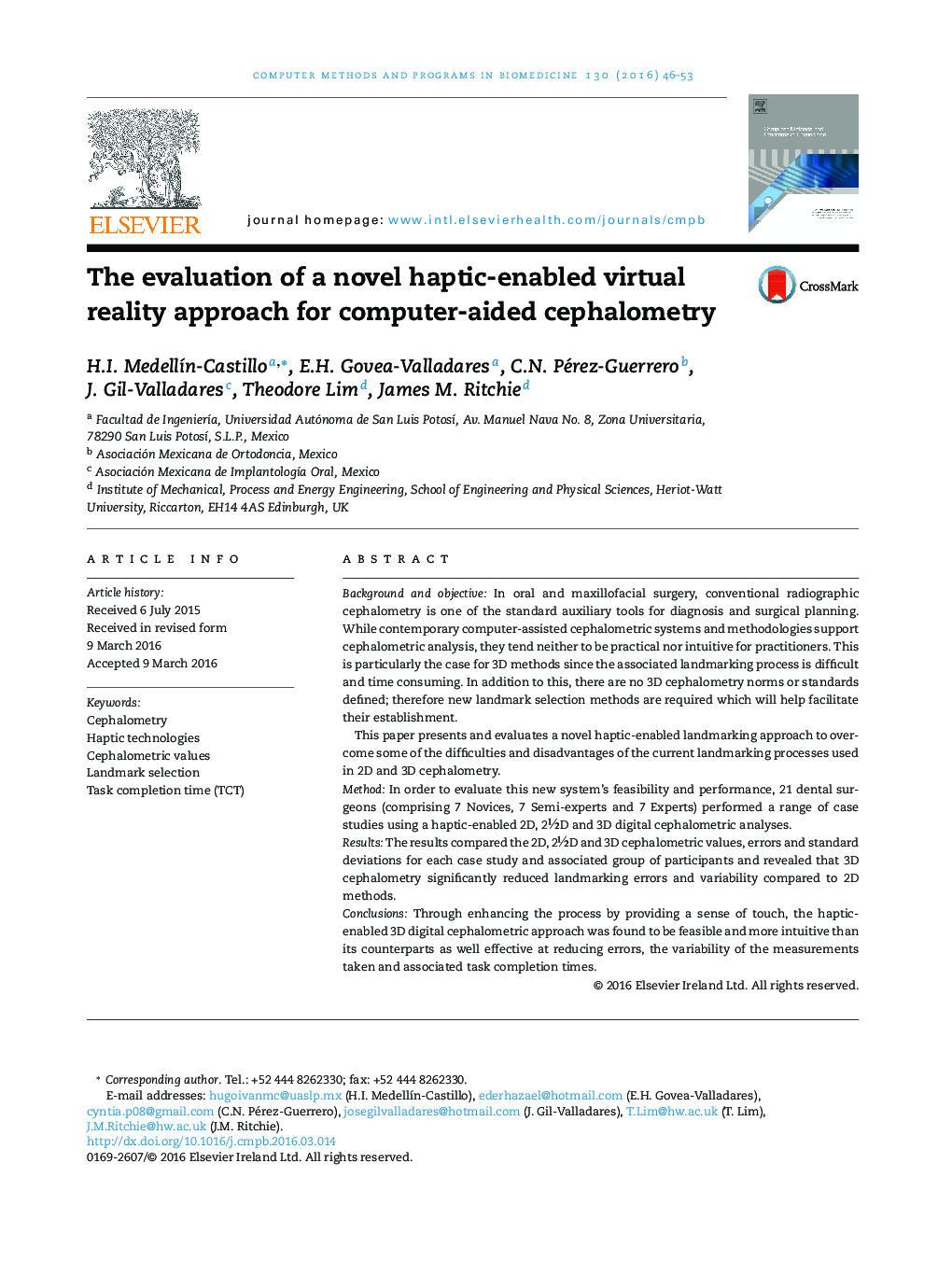| کد مقاله | کد نشریه | سال انتشار | مقاله انگلیسی | نسخه تمام متن |
|---|---|---|---|---|
| 468644 | 698245 | 2016 | 8 صفحه PDF | دانلود رایگان |
• Computer-aided cephalometric systems tend not to be practical and intuitive.
• A new haptic-enabled landmarking approach for 3D cephalometry is proposed.
• Several experimental tests were conducted to evaluate the proposed approach.
• Haptic technologies facilities the landmark selection process in 3D cephalometry.
• The haptic user interface allows the user to feel and touch the virtual patient's skull.
Background and objectiveIn oral and maxillofacial surgery, conventional radiographic cephalometry is one of the standard auxiliary tools for diagnosis and surgical planning. While contemporary computer-assisted cephalometric systems and methodologies support cephalometric analysis, they tend neither to be practical nor intuitive for practitioners. This is particularly the case for 3D methods since the associated landmarking process is difficult and time consuming. In addition to this, there are no 3D cephalometry norms or standards defined; therefore new landmark selection methods are required which will help facilitate their establishment.This paper presents and evaluates a novel haptic-enabled landmarking approach to overcome some of the difficulties and disadvantages of the current landmarking processes used in 2D and 3D cephalometry.MethodIn order to evaluate this new system's feasibility and performance, 21 dental surgeons (comprising 7 Novices, 7 Semi-experts and 7 Experts) performed a range of case studies using a haptic-enabled 2D, 2½D and 3D digital cephalometric analyses.ResultsThe results compared the 2D, 2½D and 3D cephalometric values, errors and standard deviations for each case study and associated group of participants and revealed that 3D cephalometry significantly reduced landmarking errors and variability compared to 2D methods.ConclusionsThrough enhancing the process by providing a sense of touch, the haptic-enabled 3D digital cephalometric approach was found to be feasible and more intuitive than its counterparts as well effective at reducing errors, the variability of the measurements taken and associated task completion times.
Journal: Computer Methods and Programs in Biomedicine - Volume 130, July 2016, Pages 46–53
